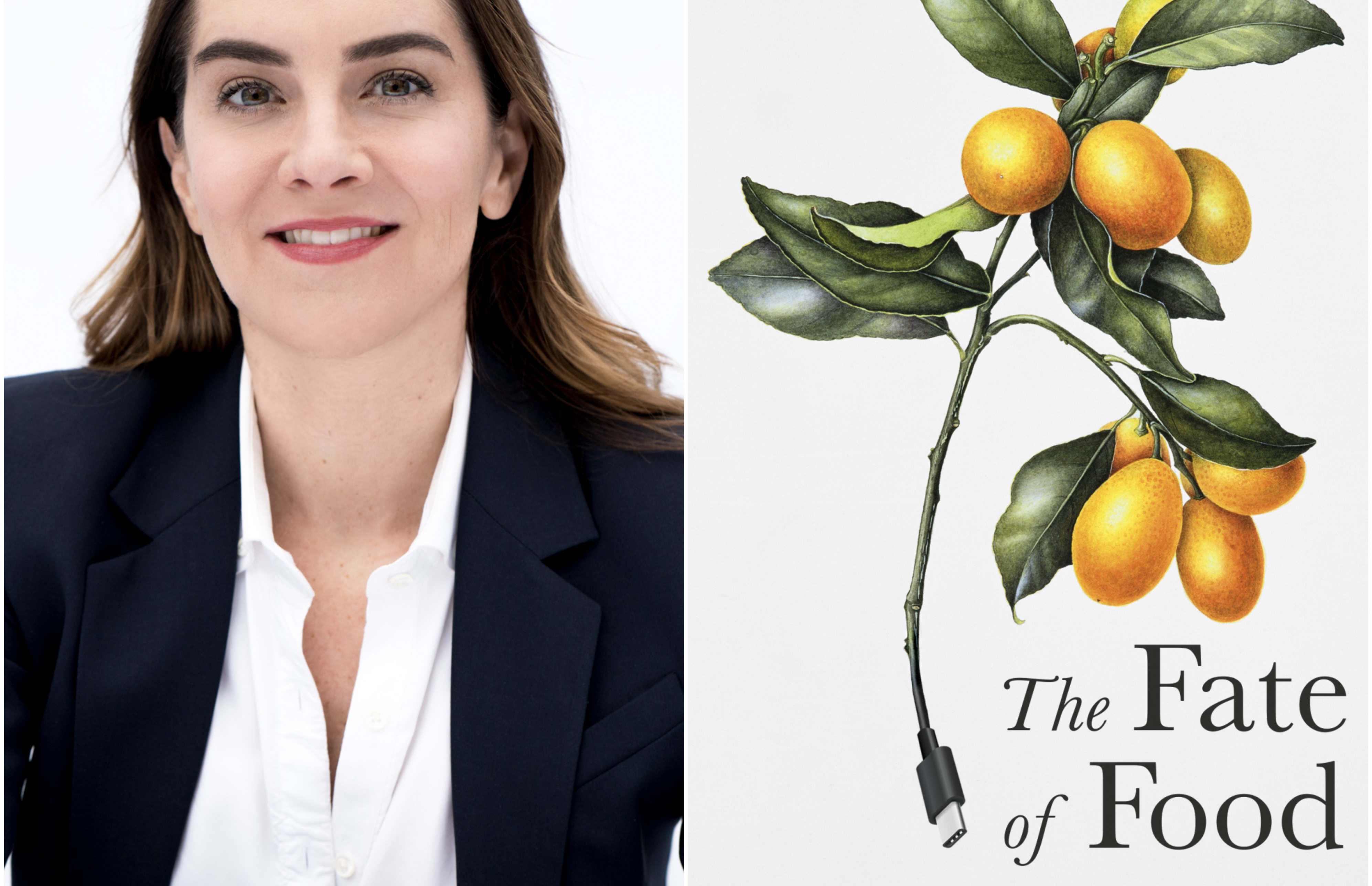By 2050, the world population is predicted to reach 10 billion people. But as droughts, floods, storms and unseasonal temperatures affect the global food supply, what will humans eat?
Writer and educator Amanda Little has spent four years travelling around the world, researching what people, business and governments are doing to ensure humanity can be fed sustainably and equitably in the future.
She explores meat grown in labs from cultured animal cells, crop-weeding robots that remove the need for pesticides and vertical indoor farms where vegetables are grown with neither sun nor soil in her new book The Fate of Food: What We'll Eat in a Bigger, Hotter, Smarter World.

Photo: author image Lindsey Rome
Given current warming trends, today's agricultural practices will no longer be able to support large human populations by the middle of the 21st century, according to a 2014 report by the Intergovernmental Panel on Climate Change (IPCC).
Yet Little is optimistic that we will be able to adapt and feed the world's population as it’s something humans have always done.
New approaches will be required, she says, such as the use of artificial intelligence and robotics in food production.
Vertical farming uses no soil and no sun – instead, either a nutrient mist or nutrient-rich water and grow lights – and reduces water use by 90 percent.
Vertically-farmed crops can sometimes grow 30 – 40 percent faster than those grown in fields, she says.
“The problem, of course, is that it requires a lot of energy when you’re not using natural sunlight.”
To get around this, some vertical farms are being placed near hydro-electric dams or wind farms, others make use of solar panels.
It's not a cheap option, Little says, and currently, only producers of gourmet foods are exploring these avenues.
“It’s a very interesting approach to a problem of; how do you grow food with radically less water and in regions where there’s… soil quality problems.”
Plant-based meats are also getting a lot of attention right now, she says.
“They taste more and more like animal-derived meats, but they’re made from soy and legumes and coconut oils and so on.”
One company even blends in synthesised animal blood, she says.
Cultured meats, grown in labs, use cells that are taken from animals and the tissues are grown.
“I tasted a cell-based duck breast, freshly harvested from a bioreactor in Berkeley, California, in a laboratory of a start-up there.”
Conventional meat producers are among the people that bankroll the start-up, Little says.
Another shift we are already seeing – this time amongst consumers – is the trend of stockpiling long-life food.
The growth in this market has created an industry that has more than tripled in the past five years in the United States.
This is in part because of paranoia and concern, Little says, but also because more and more communities are dealing with extreme weather events that have disrupted food supply.
Little finds the trend fascinating.
“This is the kind of product that, what we call in the US, 'off-gridders' or 'preppers' have been buying for many decades, but they’re a very fringe community of people who live in rural areas or are preparing for the end of times, Armageddon. What’s interesting is that [a company Little looks at in her book] was beginning to sell this product to more mainstream customers, suburban mums, and again, families who have lived through hurricanes or forest fires or floods and who couldn’t make it to the grocery stores for a few days or a few weeks even.”
Long-storage products are supposed to keep for at least 25 years, she says.
“What fascinates me in the bigger picture is this notion that the main way most people on earth will experience climate change is through its impact on food and there are very extreme examples of this, where it’s really threatening the survival of communities around the world and much more subtle examples of this where it’s effecting consumer trends in particular regions or areas.”
Many people think of climate change as a remote problem impacting faraway lands, Little says, but millions of people are already experiencing disruptions in their food supply due to extreme weather events.
“It’s hard to say. Will this become a crisis in 30 years? Is it already a crisis?
“Climate change is beginning to become something that we can taste.”
Amanda Little is a professor of investigative journalism and science writing at Vanderbilt University.

